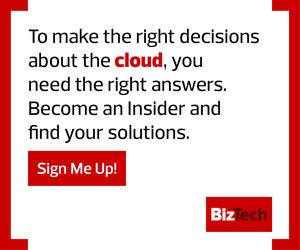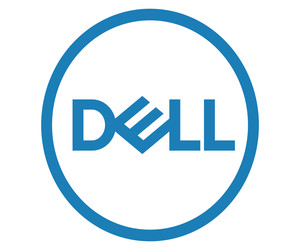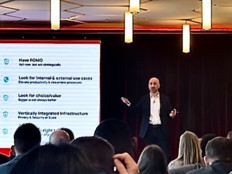When the pandemic struck two years ago, many organizations joined the mass migration to the cloud as they were forced to enable remote work. Since then, cloud adoption has only increased. Many organizations have continued evolving their infrastructures to include private and public clouds and hybrid cloud environments.
As Michael Dell, CEO of Dell Technologies, pointed out in the opening keynote for this year’s Dell Technologies World conference, “The future is multicloud, with workloads and data flowing seamlessly across the entire environment. Today, 90 percent of customers already have both on-prem and public cloud environments, and 75 percent are using three to four different clouds.”
As the world continues to emerge from the pandemic, companies are coming to terms with the volume of mobile devices and remote users that have proliferated to meet the changing needs and expectations of both customers and employees. This sharp increase in endpoints has resulted in an equally dramatic uptick in data generation, requiring innovation in all areas of data management.
Dell acknowledged these changing needs: “At Dell, we have spent decades putting you, our customers, at the center of an enormous technology ecosystem. And we’re hard at work innovating the technologies and building the ecosystem to enable true multicloud and to deliver the edge — the next frontier — where data becomes a competitive advantage immediately at the point of creation.”
LEARN MORE: See how Dell Technologies helps business meet employees' changing needs.
Why the Edge Is ‘the Next Frontier’ for Data
Dell envisions the edge as “an automated, intelligent, continuous cycle of data collection, protection, analysis and improvement.” He acknowledged that, while innovative technology is necessary, it creates a tremendous amount of distributed data and requires a tremendous amount of computing power. “Ten percent of the data in the world today is processed outside of data centers. But by 2025, 75 percent of enterprise data will be processed outside of a traditional centralized data center or cloud,” Dell said.
Managing data at the edge, where it’s being generated, allows an organization to leverage the value of data more immediately, which is why edge computing continues to grow in popularity. “5G mobile networks to handle the volume of data at the edge are a huge catalyst for that growth. And because workloads follow data, the distributed future will be much bigger than you can imagine,” Dell predicted.
In a related session, Himabindu Tummala, distinguished engineer at Dell Technologies, quoted Dell research about the recent increase in spending on edge computing. “We expect 26 percent growth by 2025, and most of it is coming from the workloads that are being developed for the edge,” she said. By 2025, Dell predicted, 80 percent of the data being generated will be processed at the edge.
Click the banner below to unlock exclusive cloud content when you become an Insider.
Edge Computing Presents Different Challenges
Also speaking at the event were Ed Hicks, business development manager at Dell EMC, and Nigel Steyn, EMEA Edge CTO at the company. They agreed with Dell that data’s center of gravity is shifting to the edge. They said many organizations are looking to automated solutions at the edge to help handle the overwhelming volume of data.
Hicks cited recent analysis by Forrester, noting that 70 percent of organizations are bringing in data faster than they can process and analyze it. And according to the Global AI Adoption Index 2021, commissioned by IBM, he stated that 90 percent of IT professionals say that being able to run their AI projects where the data resides is key to the technology’s adoption.
Hicks noted that the edge offers greater value, improved safety, reduced costs, tighter security and faster decisions for data but said some organizations are still hesitant. He said moving computing power to the edge introduces new levels of IT complexity, and use cases are frequently siloed, making it more difficult to manage data across platforms.
MORE FROM BIZTECH: Explore how Dell PowerEdge can enhance performance at the edge.
Why the Focus Should Be on Outcomes First
Steyn suggested that any organization looking to enable edge computing should first consider its business goals. “Data-driven insights help empower a safer, more engaging people experience, drive operational efficiencies, create new business models and lower the environmental footprint.”
Bill Schmarzo, customer advocate for data management incubation at Dell, spoke in a separate session but offered similar insights. “If we want to have an edge strategy that’s relevant to the business, then we need to start the conversation with the business.”
Schmarzo recommended developing an edge strategy, as opposed to what he called a “one-off edge approach.” He said organizations should have a strategy tied to the business and that starts with a business initiative. “Maybe they’re trying to reduce unplanned operational downtime. Maybe they’re trying to do predictive maintenance, really trying to optimize asset utilization across a series of wind turbines. There are a bunch of use cases out there, and this is where we’re going to define them. Not in isolation of the business but in collaboration with the business, speaking their language.”
He offered the example of sensors to explain the importance of focusing on business outcomes. “What are the problems with edge? One of the problems of IoT is, where do you put your sensors? What sensors do I need? If you don’t know what decision you’re trying to make and you don’t know what data you might want to gather to make better decisions, then it’s hard to know where to put your sensors.”
Brought to you by:












